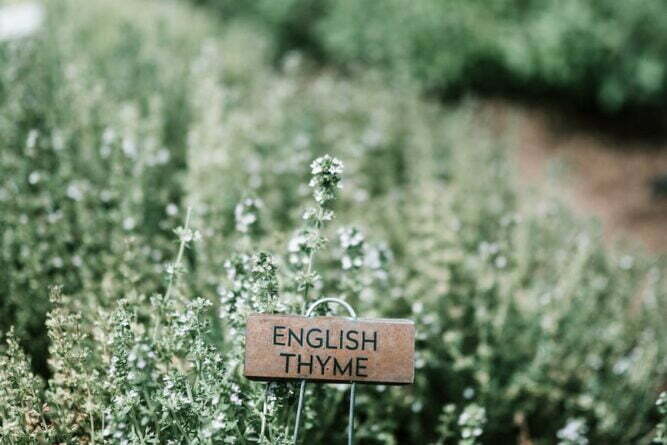Growing Thyme: A Versatile Herb with Delicious Flavor and Health Benefits
Thyme is a versatile and flavorful herb that is used in many different cuisines. It is also a popular plant for growing in gardens, as it is relatively easy to cultivate and requires little maintenance. In this post, we will cover the basics of growing thyme, including planting, care, and harvesting.
Planting Thyme:
Thyme can be grown from seeds or cuttings. If you are starting from seeds, you can sow them directly in the ground or start them indoors and transplant them later. Thyme seeds should be planted about 1/4 inch deep in well-draining soil. If you are starting them indoors, you can use seed trays or small pots with potting soil.
When transplanting thyme seedlings or cuttings, make sure to space them about 6 to 12 inches apart, as they will grow to be about 6 to 12 inches tall and wide. Thyme prefers full sun but can tolerate partial shade.
Care for Thyme:
Thyme is a drought-tolerant plant and does not require a lot of water. However, it is important to make sure that the soil is moist but not waterlogged. Water thyme plants when the soil is dry to the touch.
Thyme also benefits from occasional fertilization. You can use a balanced fertilizer every six weeks or so during the growing season.
Pruning and Harvesting Thyme:
Pruning is important to keep thyme plants looking neat and tidy and to promote healthy growth. Thyme can be pruned throughout the growing season by cutting back the stems to just above a set of leaves.
Harvesting thyme is easy, and you can start as soon as the plant has grown to be about 6 inches tall. Simply snip off the top 2 to 3 inches of growth with a sharp pair of scissors or pruning shears. Thyme can be used fresh or dried for later use. To dry thyme, hang it upside down in a cool, dark place for about a week or until it is fully dry.

Health Benefits of Thyme:
- Rich in antioxidants: Thyme is packed with antioxidants that help to protect the body against damage from free radicals. This can help to reduce the risk of chronic diseases such as cancer and heart disease.
- Anti-inflammatory properties: Thyme contains compounds that have anti-inflammatory properties, which can help to reduce inflammation in the body and alleviate symptoms of conditions such as arthritis and asthma.
- Immune-boosting: Thyme has antiseptic properties that can help to boost the immune system and fight off infections.
- Respiratory health: Thyme has been traditionally used to treat respiratory conditions such as bronchitis and coughs.
Meal Ideas with Thyme:
- Roasted chicken with thyme: Coat chicken with olive oil and sprinkle with thyme and other herbs, then roast until cooked through.
- Thyme and lemon baked fish: Coat fish with olive oil and sprinkle with thyme and lemon juice, then bake until cooked through.
- Creamy thyme mushroom pasta: Sauté mushrooms and garlic in butter, then add cream and thyme and cook until thickened. Serve over pasta.
- Thyme roasted vegetables: Roast vegetables such as potatoes, carrots, and onions with thyme and olive oil until tender and crispy.
- Thyme-infused tea: Steep thyme leaves in hot water for a few minutes to make a soothing tea that can help with respiratory issues.
Incorporating thyme into your meals is a great way to not only add flavor but also to reap the many health benefits that thyme has to offer. So go ahead and try out some of these meal ideas and enjoy the delicious taste and health benefits of thyme!
Thyme is a versatile and flavorful herb that is easy to grow and maintain. Whether you are a seasoned gardener or just starting out, thyme is a great addition to any garden. With the right care, you can enjoy a bountiful harvest of this delicious herb throughout the growing season.




